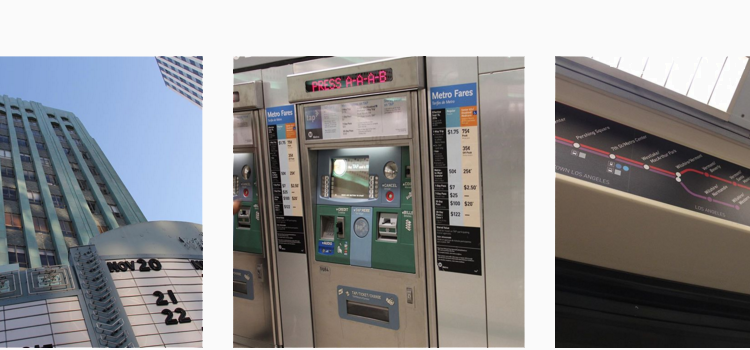The Visual LAndscapes project was born out of an idea to further engage our students with the city in which they live, and to encourage students to think critically about the ways in which they understand and interpret the built environment. This project brought together students at Pomona College and Cal State LA in courses entitled Metro Tales and The Urban World, respectively. The concept was developed collaboratively by Kathryn Robinson (Instructor in the Department of Geosciences and Environment, Cal State LA) and Livi Yoshioka-Maxwell (Visiting Assistant Professor in Romance Languages and Literatures, Pomona College). The project involved a journey on Los Angeles public transportation to a shared destination, which students documented using social media in order to create photo-essays of their travel experiences:
https://visuallandscapes.wordpress.com.
This project was also developed with support from Pomona’s Draper Center for Community Partnerships. According to Prof. Yoshioka-Maxwell:
The activity emphasized reciprocal learning between students and teachers from each institution as we exchanged ideas about the factors that shape our experience of public transportation, such as the demographics of our fellow travelers and the neighborhoods through which we pass along our journeys.

After some discussion the decision was to use Instagram as the student input method, since all the students had phones with cameras, and many already had Instagram accounts. To simplify the logins, the professors decided to have a single Instagram account shared among the class:
https://www.instagram.com/metro_tales/
Instagram also has a map function in their mobile app, so sharing the account also allowed everyone to navigate each other’s images within a map.
To display the images as photo essays, we hosted a site at WordPress.com. Hosting it there, instead of in our local installs at Pomona, allowed both schools to take some ownership of it, and both professors to have ongoing control of the site. Given the tight timeframe, the professors collected the URLs of each project, and sent them to the WordPress administrator to add them to the site.
Both classes were very happy with the results, and impressed with what we were able to pull together using off-the-shelf tools and a very quick turnaround. Given the relatively low level of resources and time, it may be a useful example of ways that otherwise distant and disparate campuses could collaborate.
For more information, see:
- WordPress site https://visuallandscapes.wordpress.com
- @metro_tales on Instagram




